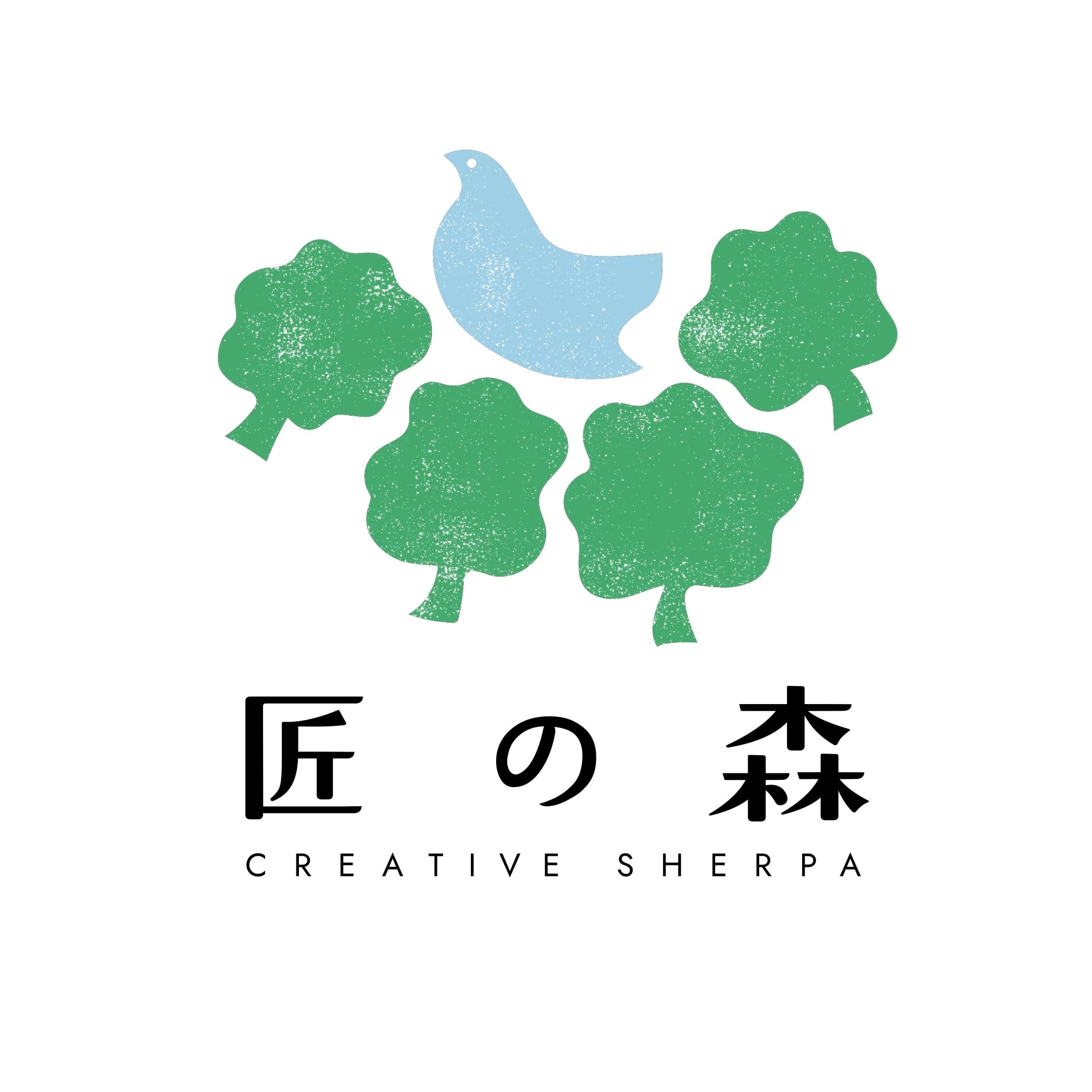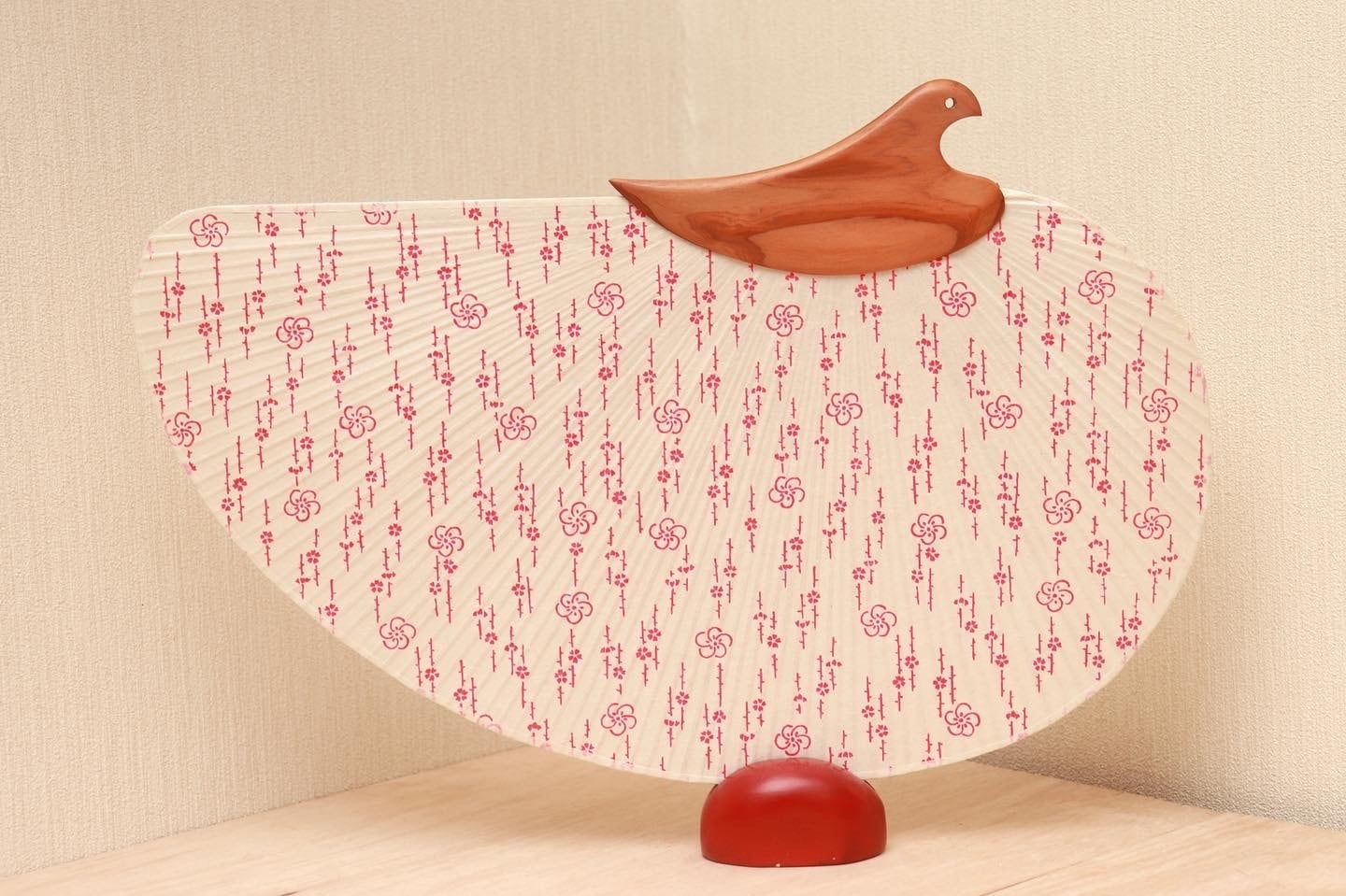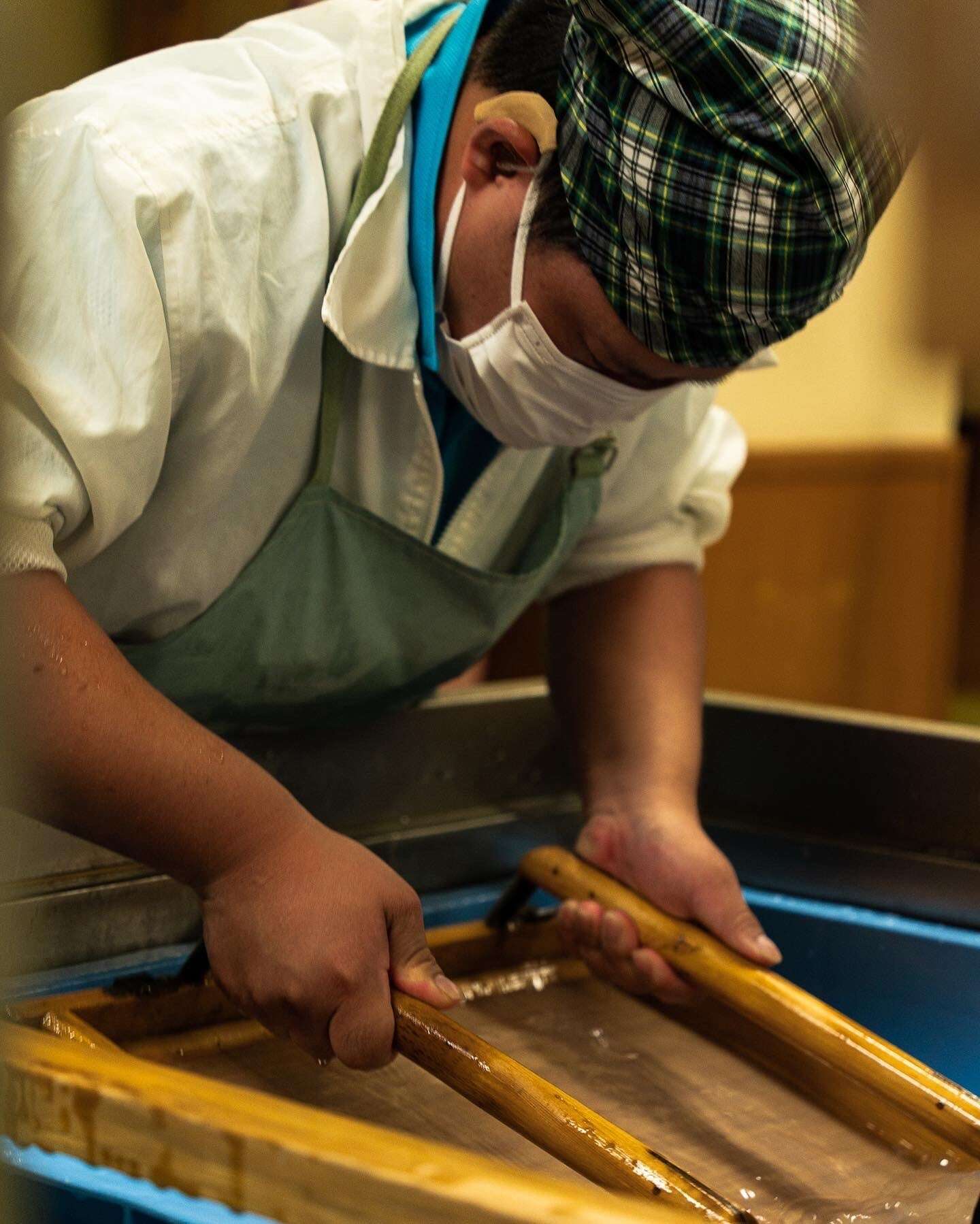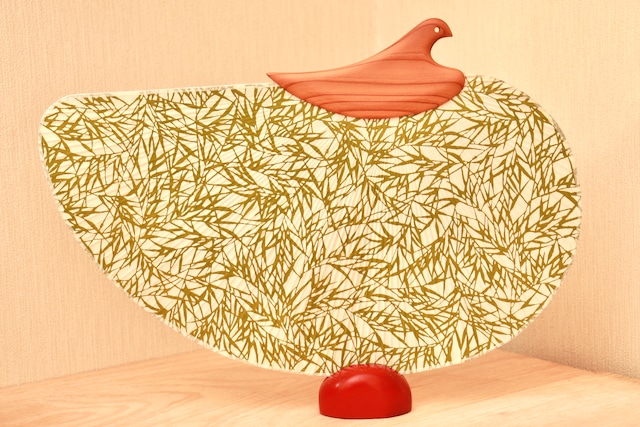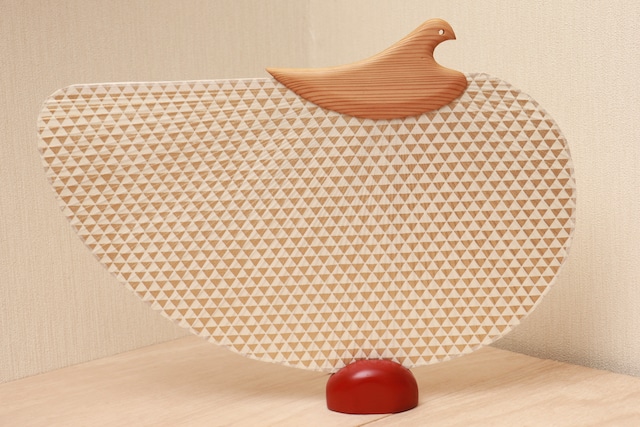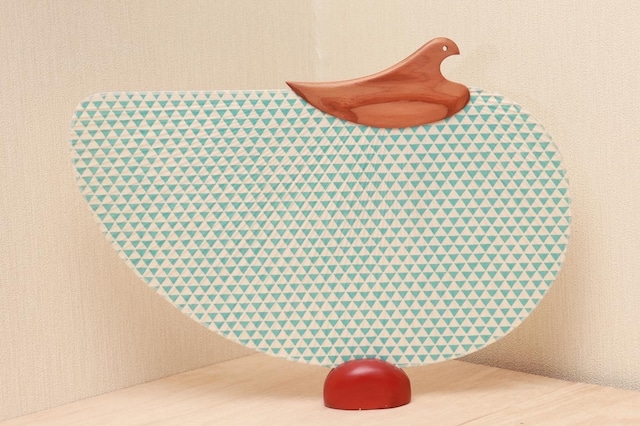江戸仕立て都うちわ千鳥型【京染和紙 × 一越紙(群馬県)】Edo-style plover-shaped Miyako Uchiwa (handy fan) 【Kyozome washi × Hitokoshi-kami】
¥17,600
SOLD OUT
伝統工芸品【江戸仕立て都団扇千鳥型】
Edo-style plover-shaped Miyako Uchiwa (handy fan)
後継者不足の伝統の技を
こだわりが強く職人的資質がある
福祉施設に通う若者たちが伝承しています。
Disabled young persons (attending welfare institutions),
who have strong commitment and craftsmanship are inheriting traditional skills with a lack of successors.
14世紀頃、朝鮮半島の倭寇から伝わった団扇は、京都の宮廷貴族たちを虜にしました。江戸時代初期、京都から江戸に渡った「江戸仕立て都うちわ千鳥型(千鳥うちわ)」。現在残る最後の職人技術が、渋谷区手をつなぐ親の会、福祉作業所ふれんどなどの異才の若者たちに講座形式で伝承されています。
Miyako Uchiwa was transmitted by Japanese pirates of the Korean Peninsula around the fourteenth century and fascinated the court aristocrats in Kyoto. Edo-style plover-shaped Miyako Uchiwa (handy fan) was passed on from Kyoto to Edo (the old name of Tokyo) in the early Edo period. The precious, traditional techniques are handed down from the last craftsmanship of the Uchiwa, to gifted young persons who belong to "Te tsunagu oya no kai in Shibuya ward and "Fukushi sagyousho Friend"
和紙はユネスコ無形文化遺産の技術で作られた「一越紙」を使用しています。
一越紙は2014年、ユネスコの無形文化遺産に登録された「細川紙」の技術を習い、楮のみを原料 に一枚ずつ丁寧に手漉きで仕上げた和紙です。
Hitokoshi-kami is a type of washi where each sheet of paper is made carefully by hand using only kozo as the raw material. Hitokoshi-kami is made by people who were trained for the technique of Hosokawa-shi, which was added to UNESCO’s Intangible Cultur- al Heritage list in 2014.
一越紙の原料となるのは、桑科の落葉低木である楮(こうぞ)です。古代から永きに渡って使われ、他の和紙原料である「雁皮(がんぴ)」や「三椏(みつまた)」などと比べ、繊維が長く優美で強靭で絡みがよいので、軽くしなやかながら、破れにくく水濡れに強い紙ができあがります。日本画材や木版画、写経、表具の用紙、障子紙などに幅広く使われてきました。
Washi can be made from trees such as “kozo”, “gampi” or “mitsumata”. The most beautiful and strongest washi is made from kozo. The fiber of kozo is long and hard so it is the most time-consuming material, but Hitokoshi-kami uses only kozo.
https://youtu.be/yizpiocC1Is
【京染和紙職人 浅井吉弘(浅井長楽園)】
Kyozome washi craftsman ASAI Yoshihiro
(Asai-Chorakuen)
江戸中期から大正時代に京友禅の型 染めに使われていた伊勢型紙を 200 種類以上と、日本の伝統色20種類 以上を駆使して、手漉き和紙に染め と刷りを施す。
Yoshihiro uses more than two hun- dred Ise paper stencils, which were used for the Kyo-yuzen (a traditional Japanese type of Kimono pattern) stencil dyeing from the mid-Edo peri- od to the Taisho period. Furthermore, more than twenty Japanese traditional colors are used to dye and stencil the handmade washi.
http://www.hitokoshi.org/kami/pdf/concept.pdf
一越紙は、この楮を100%使い、自家栽培もしています。混ぜ物はなく、もちろん化学薬品等も使っていません。木は1年で高さ2メートル程度に成長し、毎年若いうちに収穫します。硬い楮の木から柔らかな和紙になるまで、全てを工房内の手作業で仕上げています。
http://www.hitokoshi.org/kami/
竹骨は節が30 センチ以上の真竹を選別、障がい者施設の方たちと秋の新月の日に伐採、真竹を水に浸し極細に加工、竹骨を均一に貼っていきます。柄は低温乾燥加工の山武杉(千葉県産)を使い、平板を千島型に1枚ずつ糸のこで切り出し、ベルトサンダーと紙やすりの手磨きで仕上げます。
Take-bone (Bamboo frame),Only using Madake (Japanese Timber Bamboo) which has more than 30 centimeters from their joints are sorted out and cut down along with disabled young persons during the time of a new moon in Autumn. Then, the bamboo is soaked in water, cut considerably thin into 99 pieces, and glued onto the washi evenly.
Handle,Using low-temperature dried Sambu cedar from Chiba prefecture, flat boards are cut out one by one in a Chidori (Plover) shape with a fret saw. Each piece is polished by hand with sandpaper and a belt sander to make it smooth.
縦26cm 横38cm
【CREATIVE SHERPA 匠の森】
私たちは、ものづくりの隠れた才能を世に出す表現チームです。 多彩なコラボレーションにより、⽇本の未来を明るくしていきます。「シェルパ」とは、世界的登⼭家たちの荷物を担いで⾼⼭をガイドする、⾝体能⼒が ずば抜けて⾼い原住⺠の⼈たちのことです。名を知られない彼らの存在と⽣まれ持った才能に似ているのが、圧倒的な集中力と強いこだわりを持ち、 反復作業が得意な特性を持つ、アスペルガーや⾃閉症と呼ばれる⼈たちです。
その才能が職人技と出会うことで、開花する瞬間を私たちは見てきました。 ご家族も施設の方も気づかなかった、彼らにとって新しい世界の扉が開かれた瞬間です。 一般就労が困難でも、職人技を習得していくと、達成感や誇りを感じることができるようになります。彼らの職人的才能を開花させて磨きをかけ、より高みに登り、社会に役立て、 幸せにつなげることができるよう、私たちはこの活動に取り組んでいます
https://creativesherpa.net/
伝統と福祉の連携事業「匠の森」
2020年度グッドデザイン賞受賞
2021年度三井ゴールデン匠賞 奨励賞受賞
サステナブル・セレクション★(一ツ星)
サステナブル・ビジネス・マガジン「alterna」
※写真で使用している台座は販売しておりません
※湿気の多い場所での保管は避けて下さい
※持ち手の木目は写真とは多少異なります
制作:
一越会ひとこし工房(和紙/一越紙)
浅井吉弘(模様摺/京染和紙職人)
堀口惇之(竹骨貼り)
柳朗史(柄切り出し)
藤田昂平(資材作成・指導・仕上げ/千鳥うちわ職人)
羽塚順子(企画・プロデュース)
176メンバーポイント獲得
※ メンバーシップに登録し、購入をすると獲得できます。
※こちらの価格には消費税が含まれています。
※別途送料がかかります。送料を確認する
※この商品は海外配送できる商品です。
